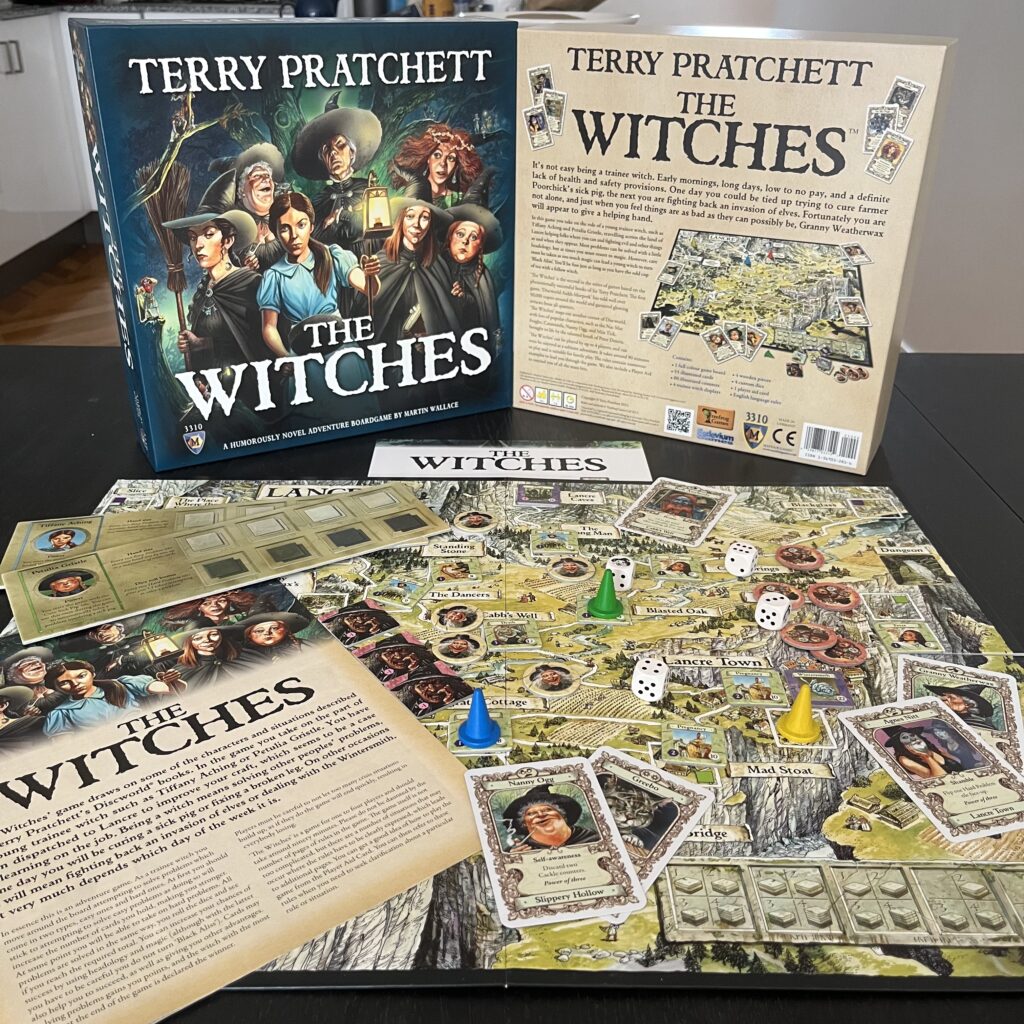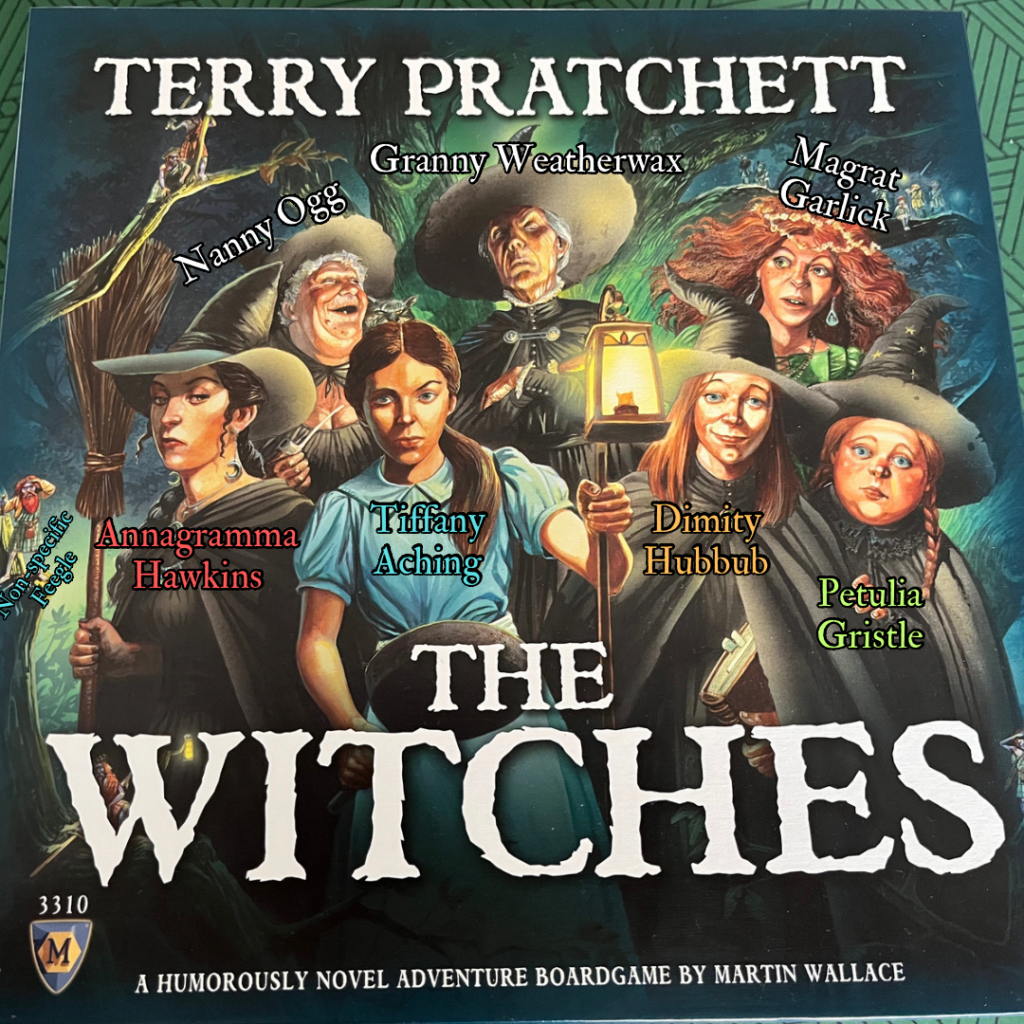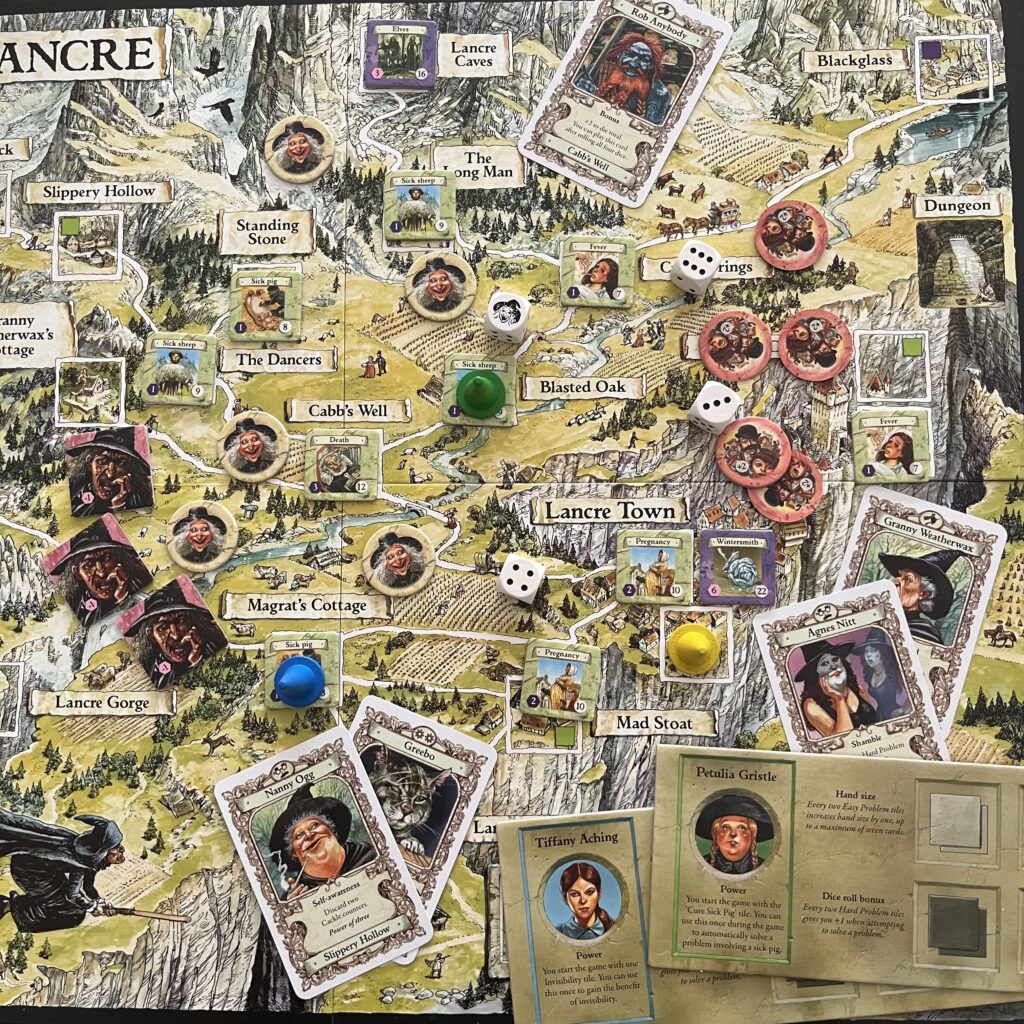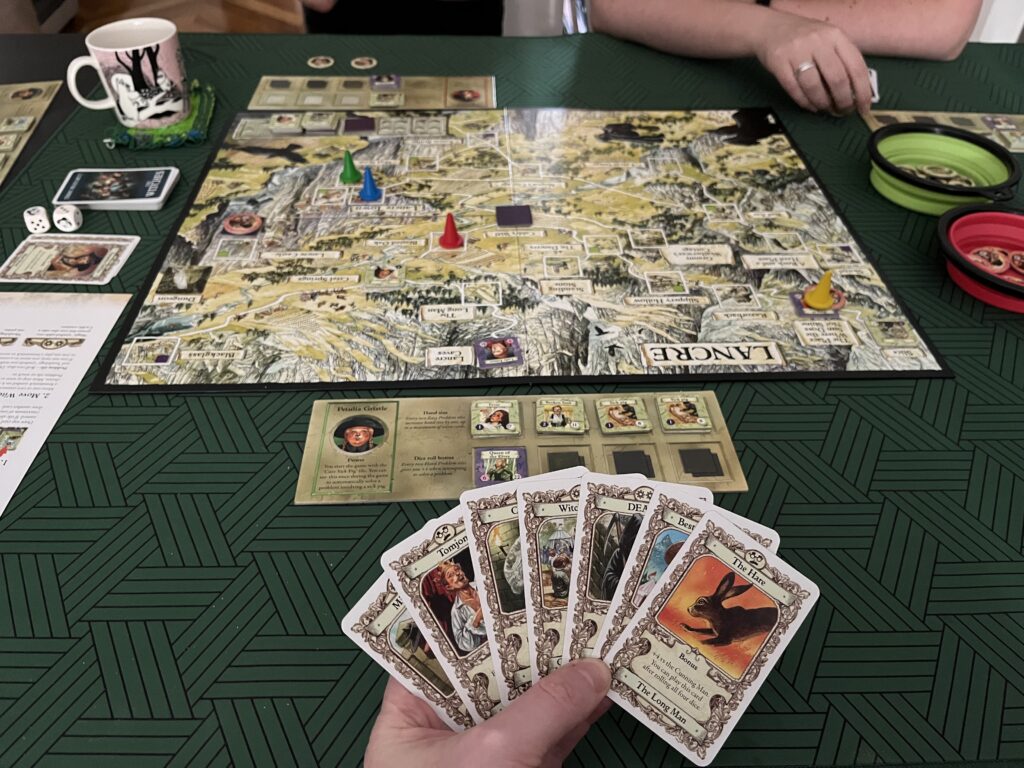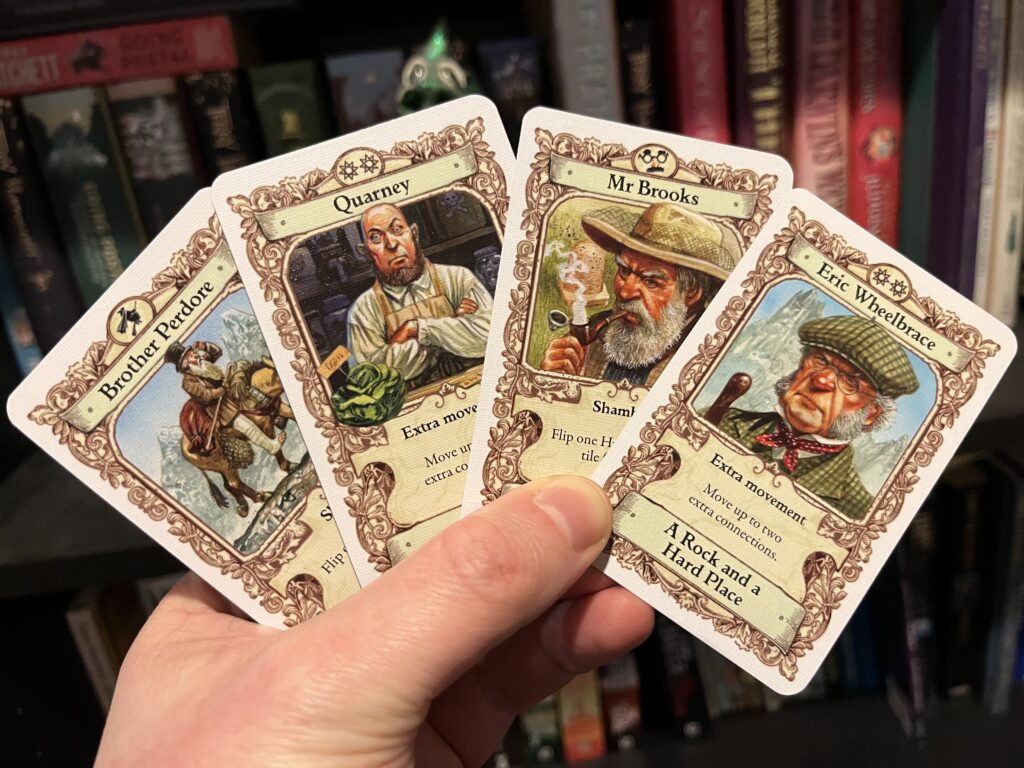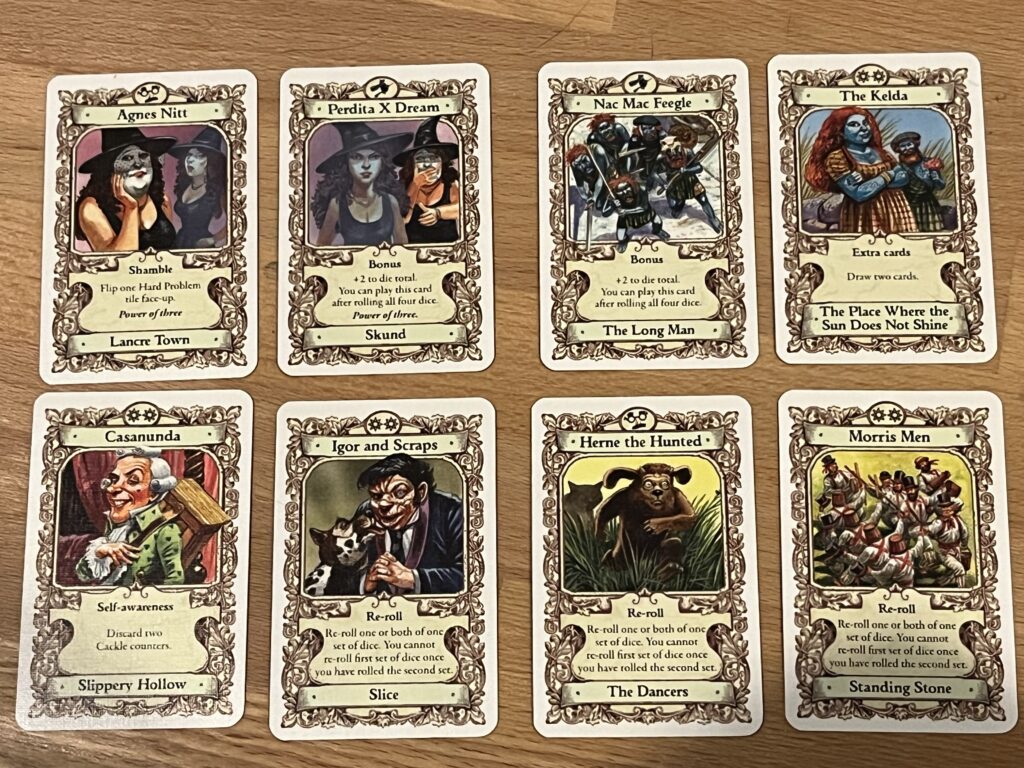#Pratchat57 Notes and Errata
These are the episode notes and errata for Pratchat episode 57, “Get Your Dad to Mars!“, discussing the third book in the Terry Pratchett and Stephen Baxter Long Earth series, The Long Mars, with guest Joel Martin.
Iconographic Evidence
(This is the section where we add pictures, where appropriate! Watch this space…)
Notes and Errata
- The episode title is a reference to famous Mars sci-fi flick Total Recall – the 1990 original version, that is, directed by Paul Verhoeven, starring Arnold Schwarzenegger and Sharon Stone, and featuring the memorable line “Get your ass to Mars!” The film is (fairly loosely) based on the Philip K Dick short story “We Can Remember It For You Wholesale”. A slightly straighter film adaptation of the story was released in 2012, starring starring Colin Farrell, Kate Beckinsale and Jessica Biel was directed by Len Wiseman of Underworld fame. We talked a lot about Dick in #Pratchat56.
- Joel was most recently a guest of the podcast in June 2021 for #Pratchat44, when we discussed the second Discworld novel, The Light Fantastic – three and a half years after he first appeared to discuss the first one, The Colour of Magic, in #Pratchat14.
- You can find out more about The Dementia Centre at their website, dementiacentre.com, or you can find The Dementia Podcast at dementiapodcast.com. You can also just search for “The Dementia Podcast” in your podcast app or directory of choice.
- We previously complained about the lack of war in The Long War in #Pratchat46, “The Helen Green Preservation Society”, with guest Deanne Sheldon-Collins.
- Warhammer 40,000 – or “40k” for short – is the franchise of science fiction war and roleplaying games made by Games Workshop. A futuristic reimagining of their medieval high fantasy Warhammer setting, it has space alien versions of elves (Aeldari), undead (Necrons), orcs (er…Orks) and more. But the most famous factions are humans – specifically the genetically modified super-soldiers of the various chapters of Imperial Marines. These Space Marines are technologically enhanced stormtroopers fanatically loyal to their undying emperor, and full of more testosterone than strictly necessary. The franchise is still going strong with many tabletop and digital games currently available, despite its “Imperium of Man” being a fascist regime, and most of the other factions aren’t much better. In the “grim darkness of the 41st millennium,” there aren’t really any “good guy” factions, though the alien T’au Empire might come close. (Ben has seldom played, but his favourite faction – back in the second edition at least – were the weird Space Orks.)
- Terry Pratchett died on the 12th of March, 2015. The last Discworld novel to be published before his death, Raising Steam, was released in November 2013, while The Long Mars was published on the 19th of June, 2014. His last three novels were the last two Long Earth books, The Long Utopia (18 June 2015) and The Long Cosmos (14 June 2016), and the final Discworld novel, The Shepherd’s Crown (2 June 2016).
- A quick guide to the timeline of the Long Earth so far:
- 2015 – “Step Day”, when Willis Linsay releases the plans for the stepper box on the Internet, giving the masses the ability to visit the Long Earth.
- 2030 – “The Journey”, Lobsang and Joshua’s trip into the Long Earth which makes up the bulk of The Long Earth. The nuclear bomb in Madison goes off in this year.
- 2040 – most of the events of The Long War occur in this year, including Maggie’s mission as captain of The Benjamin Franklin, the titular “war”, and the eruption of the Yellowstone supervolcano.
- 2045 – the main events of The Long Mars are spread across this whole year.
- The Long Mars was indeed originally titled The Long Childhood, but The Long Cosmos did not have an alternate title.
- “Stoke Me a Clipper” requires a little bit of backstory: in the sci-fi sitcom Red Dwarf, one of the characters is uptight Arnold Rimmer, a lowly technician aboard the eponymous mining starship who died in an accident with the rest of the crew. Three million years later the Red Dwarf’s only survivor – David Lister, the only technician ranked lower than Rimmer – is awakened from cryogenic suspension by the ship’s computer Holly, who supplies him with company: a computer simulation based on a scan of Rimmer’s brain and projected as a hologram. Their rivalry gives Lister a reason to go on, despite the likelihood of every other human being being dead. In “Dimension Jump”, an episode of the fourth series first broadcast in 1991, the Red Dwarf crew meet “Ace” Rimmer, a version of Arnold from an alternate dimension who is a brave, sexy and successful hero; his catchphrase before embarking on a dangerous mission is “Smoke me a kipper, I’ll be back for breakfast.” Many years later they encounter him again, only this time he shares his secret: there isn’t just one Ace Rimmer, it’s a mantle passed from one alternate version of the Arnold to another, and now the hologram Arnold’s time has come. When he puts on the wig and outfit, he has to act brave, but managed to mangle the catchphrase as “Stoke me a clipper”. This happens in series seven, in the episode also titled “Stoke Me A Clipper”, first broadcast in 1997. (T-shirts featuring both versions of catchphrase were among many designs released at the height of the show’s popularity in the 1990s.)
- The “Treaty on Principles Governing the Activities of States in the Exploration and Use of Outer Space, including the Moon and Other Celestial Bodies” – usually shortened to “the Outer Space Treaty” – was created in 1967 by the United Nations. All the major spacefaring countries then and now have agreed to it, and among its most important clauses is one stating that countries cannot claim sovereignty over any extra-terrestrial body. So while Frank would definitely have planted a flag, surely there’s no way he’d have tried to claim Mars for America – unless, of course, it’s been determined that the Mars of other universes doesn’t count? He’s also not acting on behalf of his country, and there’s been much debate in recent years about what the treaty means for private exploration of space. It does, however, make it clear that States are responsible for any activities conducted in space by their citizens, whether privately or otherwise, and says that outer space shall be “free for exploration and use by all States”, so we’ll have to see if that holds up.
- Michael Fenton Stevens is an English actor and comedian. He started out in the Oxford Revue, where his cohort – which included Angus Deayton, Helen Atkinson-Wood and Geoffrey Perkins – followed the time-honoured British comedy pathway of doing an Edinburgh Fringe show which spawned a radio programme (Radio Active) and then became a television series (KYTV). He has since been a fixture around the 1980s guard of comedians, appearing in plenty of sitcoms and radio series, including the later instalments of The Hitchhikers Guide to the Galaxy based on the books. His most famous role, though, was probably as a voice artist for satirical puppet program Spitting Image, because he sang “The Chicken Song”. Released in 1986, this was an infamous parody of holiday disco dance pop songs like “Agadoo”, and was written by Red Dwarf scribes Rob Grant and Doug Naylor. It was #1 in the UK for three weeks and was performed live by the Spitting Image puppets on Top of the Pops. As well as reading The Long War series, he also reads the science chapters of the Science of Discworld books (as we’ll mention in #Pratchat59), and played the roles of Spider and one of the Ratcatchers in the 2004 BBC Radio 7 adaptation of The Amazing Maurice and His Educated Rodents, alongside David Tennant as Dangerous Beans.
- The Expanse is a series of hard sci-fi novels written by “James S. A. Corey”, the pen name of Daniel Abraham and Ty Franck. They are set in the 24th century, imagining a future in which humans have colonised Mars and the asteroid belt, but in which “belters” who are born and live in low or zero gravity have become an exploited underclass, and Mars has declared independence from Earth, now ruled by a United Nations world government. The series begins with 2011’s Leviathan Wakes, and concludes with the ninth book, Leviathan Falls, published in 2021. Ben is mostly familiar with the popular television adaptation, also titled The Expanse, in which the characters are noticeably more argumentative. The long debates about what to do while in space are a result of the setting’s very realistic spaceflight; while the ships of its future have advanced engines capable of producing massive thrust, there’s no “artificial gravity” or “inertial dampening” technology. Changes in course while travelling involve “multiple G burns” which put enormous stress on the bodies of a ship’s crew, who have to be strapped into special chairs and have fluids injected into their bodies to protect them from injury or death.
- We’ve discussed space elevators before in our episodes about The Science of Discworld (#Pratchat35) and The Science of Discworld II: The Globe (#Pratchat47), and we’ll see them again in The Science of Discworld III: Darwin’s Watch (#Pratchat59) and Strata (#Pratchat68). The origins of the concept go back to the late nineteenth century, with ideas of building towers tall enough to reach space, but the modern version – where a cable under tension is built down to Earth from a counterweight in geosynchronous orbit – was first described in the late 1950s. Despite this pedigree, they didn’t start appearing in science fiction until two decades later, with the earliest novels to feature space elevators being Arthur C Clarke’s The Fountains of Paradise and Charles Sheffield’s The Web Between the Worlds, published almost simultaneously in 1979. The elevator in Clarke’s novel is eventually built on Mars, and many novels set on Mars have featured space elevators too. Notable examples include Kim Stanley Robinson’s Red Mars, and Larry Niven’s Rainbow Mars – a collection of short stories which started life as a collaboration with Terry Pratchett! (For more about Larry Niven, see our Strata episode, #Pratchat68.)
- Ben and Joel are both big fans of Disney’s 2012 science fantasy film John Carter, which previously came up in #Pratchat44. The film is an adaptation of 1912’s A Princess of Mars, the first of Edgar Rice Burrough’s Barsoom series, but it incorporates elements from later books as well. The novel is a classic of early space fiction, birthing the genre of “planetary romance”. Both the book and film feature American Civil War veteran and Confederate solider John Carter, who is mysteriously transported to Mars, known to its local population as “Barsoom”. Mars’ lower gravity gives him enhanced strength, and after becoming friendly with the local “green Martians”, Carter reluctantly gets involved in the conflict between the forces of two warring city-states of the “red Martians”. It’s pretty great fun, with very watchable performances from Taylor Kitsch as John Carter and Lynn Collins (who should be in way more things) as the Princess of the book’s title, Dejah Thoris. The script is a thoughtful and modern adaptation written in part by novelist Michael Chabon. It’s clearly set up as the first in a series of films, but it was hugely expensive, and was not commercially successful. Fans of the film often credit this to Disney’s failure to adequately market the film, which ironically seems to have been fuelled by their fears it wouldn’t succeed. (Ben often refers to it affectionately as Riggs Takes His Shirt Off on Mars – a reference to Taylor’s previous leading role in the television drama Friday Night Lights as teenage footballer Tim Riggins, and the number of films in which he takes his shirt off, including the infamously bad Battleship film, aka Riggs Takes His Shirt Off at Sea.)
- The “Space Jockey” is the giant humanoid pilot of the crashed spaceship encountered in Ridley Scott’s 1979 film Alien, which is where the crew of the human space truck Nostromo encounter the titular alien. The name “space jockey” was a nickname given by the crew, but it’s also the title of an unrelated 1947 science fiction story by Robert A. Heinlein, about a human space pilot dealing with the everyday humdrum problems of ferrying stuff and people between Earth and the Moon. The space jockey itself remained entirely mysterious until the more recent (and much worse) Alien films, beginning with Prometheus, which reveal it was an Engineer – the species who created both life on Earth and the aliens themselves.
- The ad where Martians use photorealistic printouts to fool a Mars rover was “Mars Mission”, made for Hewlett-Packard (not Canon, as we thought), and broadcast (we think) in 1996 and/or 1997. You can watch it on YouTube here.
- Twelve humans have set foot on the Moon, all of them NASA astronauts. While Eugene “Gene” Cernan was the last person to stand on the Moon, he was also the eleventh, not twelfth, person to set foot there. This apparent contradiction is because he got out of the lunar module first, but got back in last, after his Apollo 17 crewmate, Harrison Schmitt. Cernan and Schmitt also spent the longest time on the Moon: over 12 days, they spent 22 hours and 2 minutes outside the module. Cernan died in 2017 (we wonder if anyone told him about the twain in The Long Mars?), but Schmitt is still alive at the time of this episode’s release.
- We previously mentioned the 1986 My Little Pony: The Movie in #Pratchat21, “Memoirs of Agatea”. The “purple slime” was the “Smooze”, created by villain Hydia (played by Cloris Leachman!) to destroy the ponies’ home. It’s defeated by a magical wind created by the flying Flutter Ponies.
- In Stanley Kubrick’s black comedy 1964 film Dr. Strangelove or: How I Learned to Stop Worrying and Love the Bomb, American Air Force Brigadier General Jack D. Ripper becomes delusional and goes rogue. He uses a code known only to him to order a nuclear bombing run on Russia because he believes they put fluoride in the water to corrupt the “precious bodily fluids” of Americans. His aide, Colonel Mandrake (one of three roles played by Peter Sellers), eventually deduces Ripper’s code from the paranoid ramblings in his notes, which repeat “purity of essence”. The film is a classic, and was based (if loosely) on the more serious novel Red Alert.
- Ben says “less babies”, and yes, as “baby” is a countable noun, it should be “fewer babies”. He’s sorry about that.
- When Ben’s talking about “older Star Trek”, he really means anything made before the new batch of shows that started with Star Trek: Discovery in 2017. Prior to this, the most recent Star Trek show was Enterprise, which finished in 2005. All of those older shows are set in the 22nd to 24th centuries, and yet include conventions of gender, sexuality and relationships which make them feel old-fashioned by today’s standards, making a little difficult to imagine they’re really set in the future. The exceptions often occur in alien cultures, rather than in the future humans – for example the Next Generation episode “The Outcast” tries to deal with the idea of stepping outside gender roles with a character who, like Cheery Littlebottom, comes from a culture which recognises only one gender, but who wishes to be female.
- The thinking beagle in The Long War was not Snowy, but Brian – possibly named after the talking dog from American animated sitcom Family Guy. His speech about being weird for a beagle appears near the end of chapter 51.
- Sam Allen appears in chapters 18 and 19 of The Long War; he’s in command of the squad who get stranded in Reboot when their gear is mistakenly delivered to the Earth next door, and none of them have brought steppers. He has a confrontation with Helen’s father, Jack Green, nearly starting a fight. Following the incident, Maggie puts him off her ship the first chance she gets.
- Page counts and estimates tell us that The Long Earth is the shortest book in the series, at probably around 105,000 words, while The Long War is the longest by a fair margin (approx. 131,000 words). The Long Mars is the second shortest (approx. 110,000 words), with the final two books pretty close to the same length (each is somewhere between 116,000 and 118,000 words), with The Long Utopia the slightly shorter of the two.
- Shangri-La is a Tibetan monastery nestled in a valley beneath the mountain of Karakal – both fictional locations drawn from the 1933 novel Lost Horizon by English novelist James Hilton. In the book, a party of four English and American folks crash their plane in the Kunlun mountains (which are not fictional) and find they way to Shangri-La, which is an idyllic paradise. The people living there age very slowly, living as long as 250 years, but if they leave the valley they age and die quickly. Looked at through modern eyes, the story has plenty of problems, not least of which that this supposedly Tibetan “lamasery” is revealed to have been founded by a Catholic monk, who as he is about to die, wishes one of the English visitors to take over as leader. (“Lamasery” itself is an erroneous term used in English for Buddhist monasteries in Tibet, based on the misunderstanding that “lama” means “monk”. Lama is actually a highly revered title, only given to very few Buddhists.) The book gained attention after Hilton’s next novel, Goodbye, Mr Chips (about the life of a schoolteacher) was a big hit. The concept of Shangri-La as a distant, utopian place has been a part of popular culture every since, and has inspired many stories – notably that of The Immortal Iron Fist, a white Marvel superhero who learns his supernatural martial arts after surviving a plane crash in the mountains of Tibet as a child and being brought up by the monks of the hidden mystical city of Kunlun.
- Don’t Look Up is a satirical 2021 Netflix film in which a pair of astronomers (played by Jennifer Lawrence and Leonardo DiCaprio) discover a comet which will destroy all life on Earth, but struggle to get anyone to take the threat seriously. Its mix of dark humour and unsubtle climate change metaphors split audiences, many of whom thought it was clumsy. But there are plenty of things to like about it – including Mark Rylance’s role of Peter Isherwell, a tech billionaire who wants to mine the comet for rare minerals instead of destroying it.
- The Pink Panther series of comedy films began with 1963’s The Pink Panther, directed by Blake Edwards, which focussed on the Phantom, a jewel thief played by David Niven. But Peter Sellers stole the show in his role as a bumbling French detective, Inspector Jacques Clouseau, so he became the main character for four increasingly oddball sequels between 1964 and 1978. A recurring gag that begins in the second film, 1964’s A Shot in the Dark, is that the Inspector has tasked his manservant Cato (Burt Kwouk) to attack him by surprise, to keep him in top fighting condition. Clouseau often survives these attempts on his life only because Cato stops to answer the Inspector’s phone when it rings… While Sellers is the best-known version of the character, there have been others. Blake Edwards went on to make three more Pink Panther films after Sellers’ death with new lead characters, though none succeeded. Earlier, in 1968, the company who owned the rights made their own separate Inspector Clouseau film without any of the original creative team, starring Alan Arkin. Most recently, a reboot of the series starring Steve Martin as Clouseau lasted for two films: The Pink Panther (2006) and The Pink Panther 2 (2009). A new film was in development in 2020, but there’s been little news of it since.
- Professor Charles Xavier – known as Professor X – is a Marvel comics character, a powerfully psychic mutant who founds a school, ostensibly to help young mutants master their extraordinary powers. He does do that…but also recruits his young students to reform the image of mutants in the public eye by acting as a team of superheroes, known as The X-Men. This is necessary in part because Xavier’s fellow powerful mutant, Erik Lensherr – aka Magneto, Master of Magnetism – has decided to deal with prejudice against mutants more directly. He creates The Brotherhood of Mutants, more-or-less a terrorist organisation whose aim is to either force humanity to treat mutants as equals, or bow before them as their servants. (In early comics Magneto’s group were named “The Brotherhood of Evil Mutants”, just in case you were wondering if they know they’re being nasty.)
- Brave New World is Aldous Huxley’s 1932 dystopian novel that imagines a future where humans are grown in artificial wombs, sorted into distinct castes based on physical and mental ability, and controlled through the use of drugs. Most castes are encouraged to be promiscuous to keep them happy, and the use of contraception is mandatory; they are also subjected to various forms of conditioning to get them to behave in the way the state approves, including encouraging children to engage in sexual play from a young age.
- We mention a few classic sci-fi novels during our discussion of the Next:
- The Chrysalids is John Wyndham’s 1955 post-apocalyptic novel in which a society practices eugenics to keep itself pure of mutations, and a group of children with telepathic abilities try to keep their abilities secret;
- The Stepford Wives is Ira Levin’s 1972 “feminist horror” novel, in which a female photographer moves to a small town and is increasingly disturbed at the way all the women there are uniformly beautiful and subservient to their husbands;
- The Midwich Cuckoos is another Wyndham novel from 1957, in which an English village suffers an unusual visitation in which all its residents are made unconscious, after which all the women of the village discover they are pregnant and later give birth to unusual and similar children;
- A Clockwork Orange is Anthony Burgess’ 1967 dystopian novel, which we mentioned in #Pratchat55; it depicts a future where gangs of teens speak their own slang language and engage in random acts of “ultra-violence”, and the state tries a new form of aversion therapy on the protagonist;
- The Sound of Music (which was not “the one with the children” Ben was thinking of) is the stage musical and subsequent film adaptation based on the 1949 book The Story of the Trapp Family Singers by Maria Augusta von Trapp.
- When Liz says “a parasite like a Yeerk” she is referring to the alien foes of the shape-changing Animorphs, teenage protagonists of the Animorph books by K. A. Applegate published by Scholastic between 1996 and 2001. We’ve previously mentioned them in #Pratchat19, #Pratchat25, #Pratchat35 and #Pratchat43…though when we say “we”, we really mean Liz. Ben has never read an Animorph in his life.
- In the various Stargate television series, the Goa’uld are a parasitic species who take humans for hosts, granting the body great strength and regenerative properties, and able to live for hundreds of years, changing hosts if necessary over time. Their true form is a snake-like aquatic creature, which wraps itself around the spinal cord of the host to gain access to their brain and motor functions. While the antagonistic Goa’uld System Lords believed they were superior to other lifeforms, using their advanced technology to pose as gods to the humans they sought to enslave, a breakaway faction called the Tok’ra lives in harmony with their hosts, and opposes the ways of the System Lords.
- We mention a couple of hologram meetings from films that are similar to the one in the book. The first takes place in the 2014 film Captain America: The Winter Soldier (not The Avengers, though similar technology is later used in Avengers: Endgame), when Nick Fury meets with the World Security Council. The Star Wars one is the meeting of the Jedi Council in Star Wars Episode II: Attack of the Clones (2002).
- It was indeed Mac talking about war being fun in The Long War, in the middle of Chapter 67.
- George Armstrong Custer (1839-1876) was an officer for the United States in the American Civil War, though became most famously known for the Battle of Little Bighorn in Montana, in which he led American army forces against Native Americans and lost, dying along with his entire regiment. This has been romanticised as “Custer’s Last Stand”, and he is sometimes held up as an example of an officer whose decisions caused the death of those under his command. Whatever it’s called it remains an act of colonial aggression, and just one of many examples of Custer’s participation in violence against the First Nations peoples of America, including many incidents we would today regard as warcrimes.
- There aren’t any other Cutlers who immediately come to mind, but it is a very common name; like many English surnames, it’s based on an occupation, in this case a maker of cutlery.
- When Liz says it’s “just like Lord of the Rings” in reference to Joel’s use of the phrase “just to carry a nuke there and back again”, it’s a double reference – both to the Ring as an allegory for nuclear weaponry, and its prequel The Hobbit, whose full title is The Hobbit, or There And Back Again.
- Foundation is Isaac Asimov’s series depicting a future history of a spacefaring human empire. The Foundation of the title is an organisation created by genius Hari Seldon to collect and preserve human knowledge, and prevent the coming of an extended dark age. Seldon does this thanks to his invention of “psychohistory” – an accurate mathematical modelling of society able to predict its future – which allows him to leave instructions for the Foundation on how to alter history’s course. Originally written as a series of short stories, collected into three novel-length books, Asimov later added four more novels, the last of which was published after his death. Foundation covers a vast span of time – about a thousand years – and so necessarily leaves many human characters behind after they die. It was hugely influential, both on science fiction and science, and is clearly one of the influences on The Long Earth series.
- A Hohmann transfer orbit can be used to transfer a spacecraft between any two orbits around the same central body, so its not just for travelling between Earth and Mars. You could use this method to travel between any two planets in the solar system, or between a low-Earth orbit and the Moon.
Thanks for reading our notes! If we missed anything, or you have questions, please let us know.

